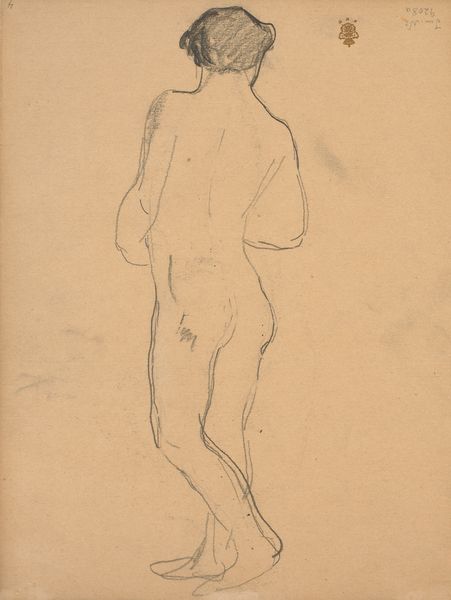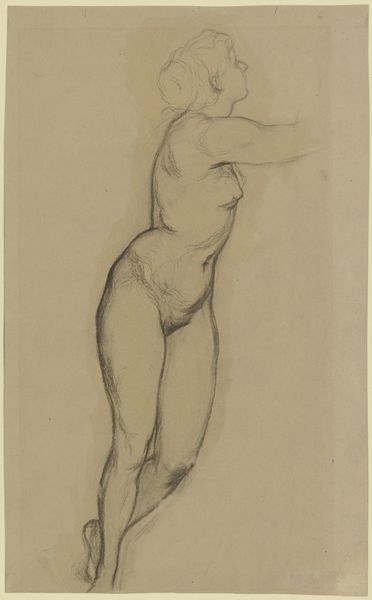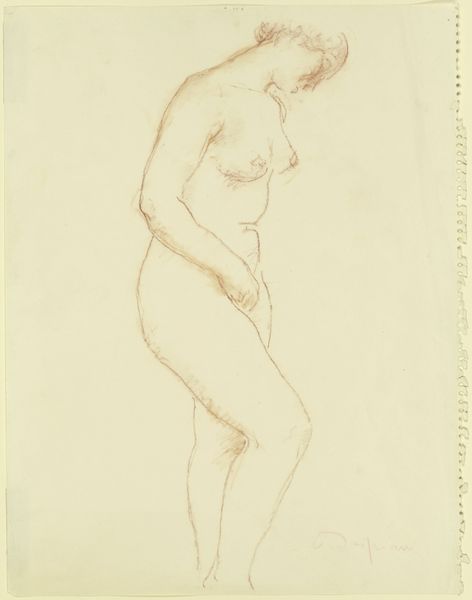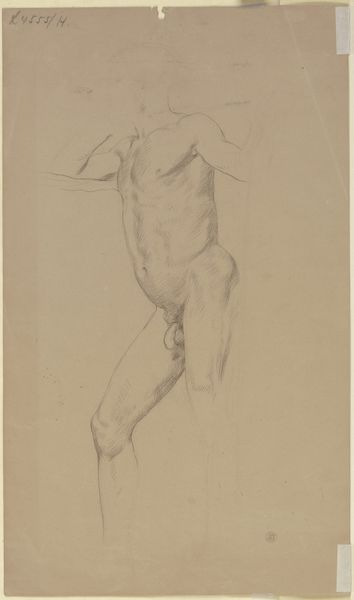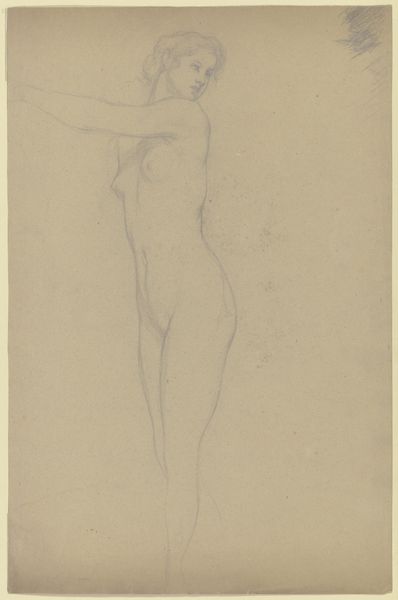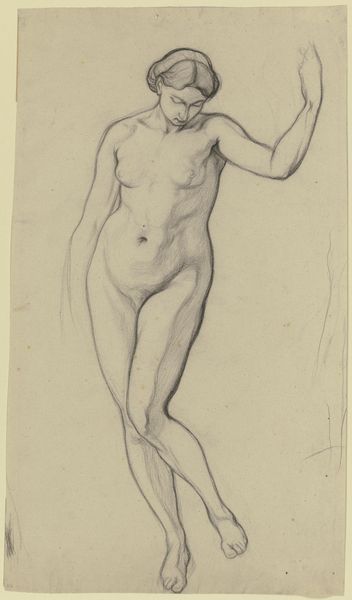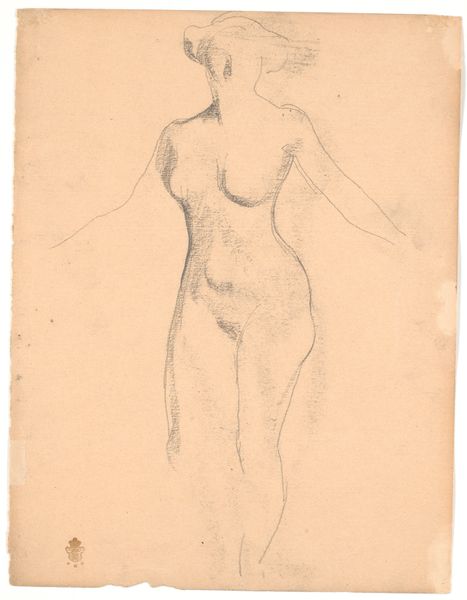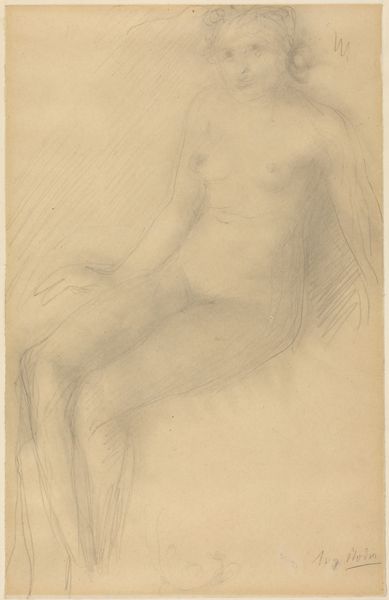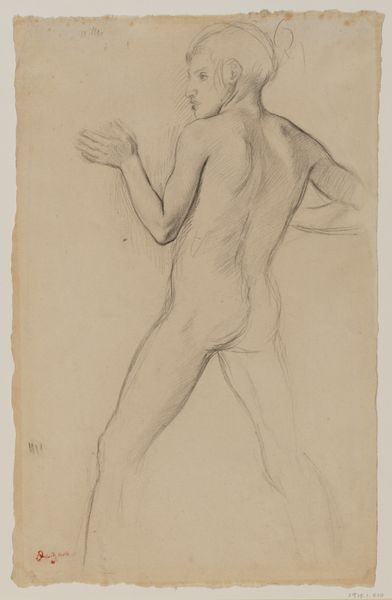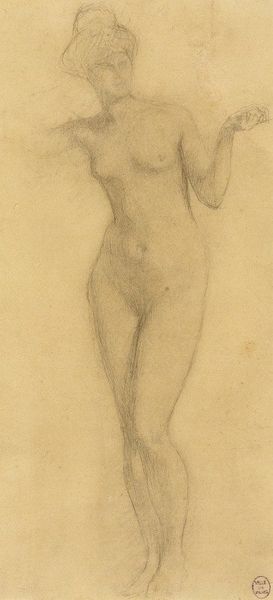
Dimensions: Overall: 12 5/8 x 7 11/16 in. (32 x 19.5 cm)
Copyright: Public Domain
Curator: This is Auguste Rodin's "Young Girl Kneeling," created sometime between 1840 and 1917. It's a pencil drawing, offering a glimpse into Rodin’s study of the human form. Editor: My initial reaction is to the tentative, almost fragile quality of the lines. The figure seems to emerge softly from the page. Curator: It is a tender rendition, isn’t it? The portrayal of a young woman kneeling could be interpreted in several ways. Rodin often challenged traditional academic norms by depicting the female form with a raw sensuality, diverging from the objectification of the female body that was customary at that time. It’s thought that he approached figuration through an almost anthropological lens. Editor: I agree that it breaks away from some of the conventions, yet the classical pose with its emphasis on line and volume gives it a kind of formal grounding. Notice the artist's use of hatching and cross-hatching to sculpt the figure's curves. It shows a careful balance of shadow and light. Curator: Indeed. Rodin's approach also opens up discussions regarding the power dynamics inherent in the male gaze and representation. How do we engage responsibly with nudes in art? I think this can facilitate dialogues about reclaiming agency, perhaps examining the model’s lived experiences. It's important that our aesthetic appreciations also intersect with ethical consciousness. Editor: That ethical consciousness is really necessary, and what really draws my attention here are the subtler compositional details. Look how the lines suggest the form but also leave much to the imagination; there is a kind of incomplete and ambiguous nature that forces one to focus on formal properties of form and figure rather than representation. Curator: The intimacy conveyed by Rodin’s study reminds me of the importance of diverse voices and narratives within our institutional spaces. Editor: For me, that ambiguity and attention to form also suggest that the value comes not necessarily from what is explicitly depicted but instead arises out of a careful artistic method and an eye for the human figure.
Comments
No comments
Be the first to comment and join the conversation on the ultimate creative platform.

